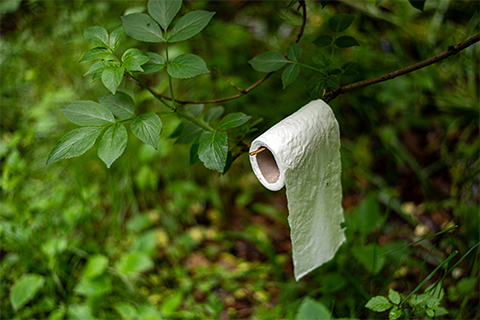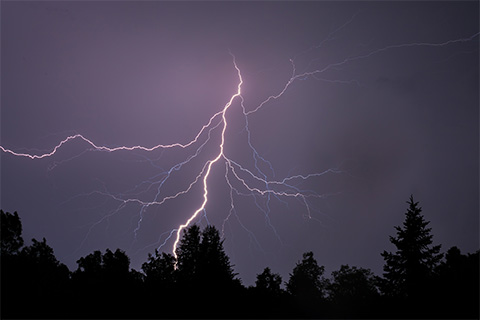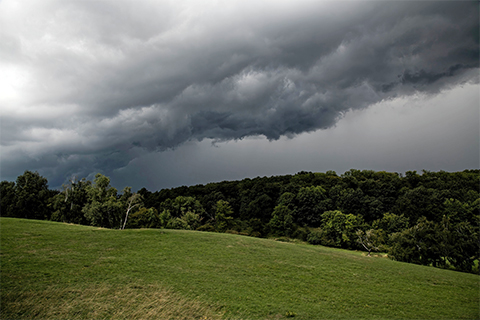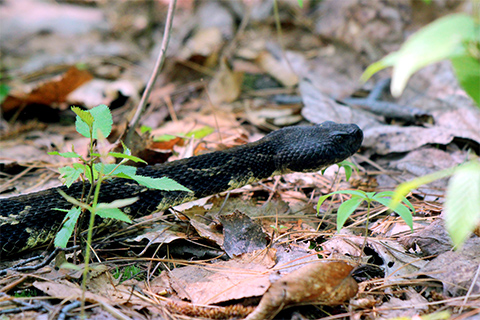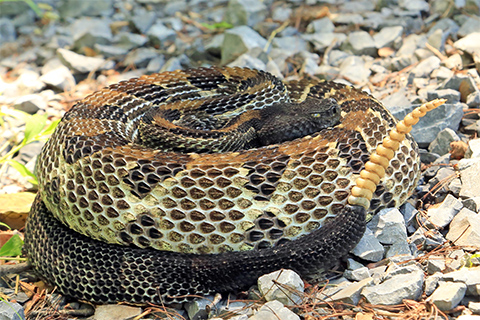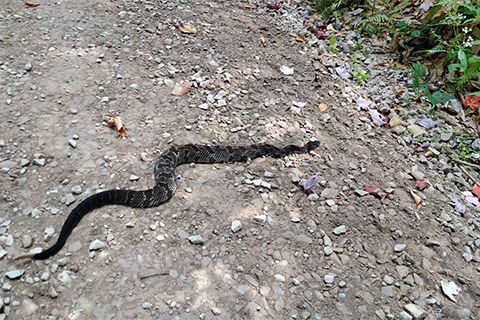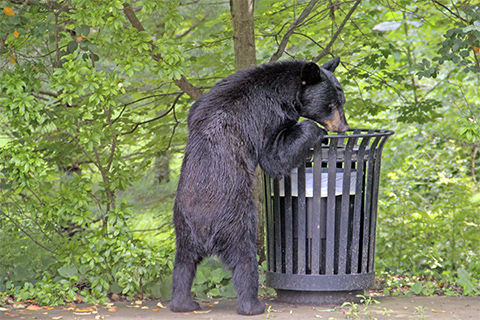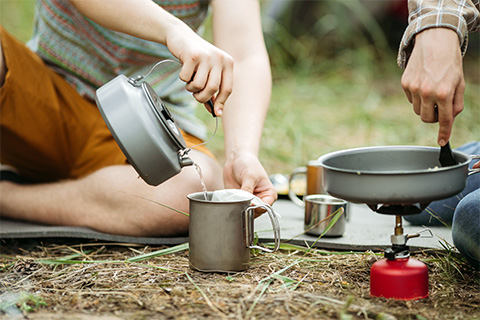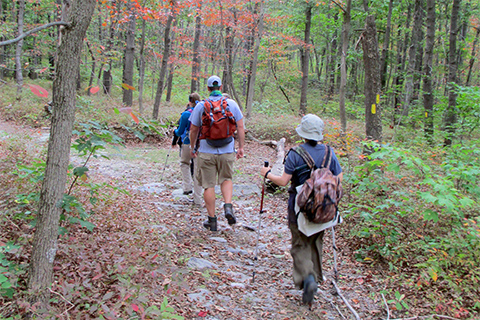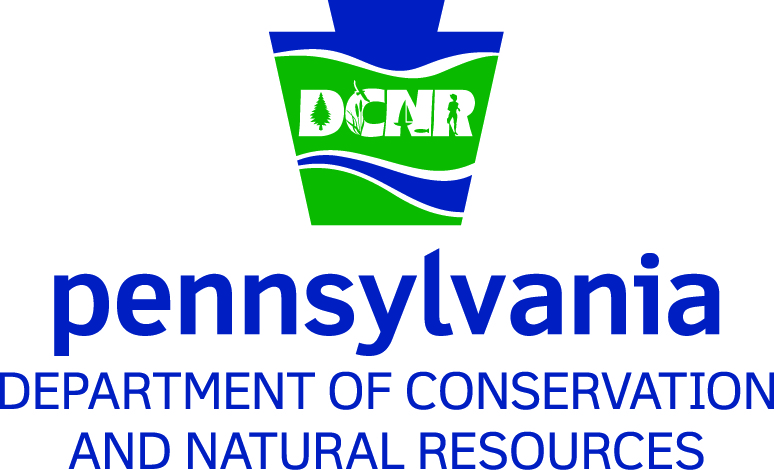Pennsylvania Department of Conservation and Natural Resources
Originally posted on the DCNR Good Natured page here
Here in Pennsylvania, everyone talks about the beautiful vistas and breathtaking waterfalls you will see if you go hiking. Many people have stories of observing wildlife up close or seeing sunrises and sunsets.
But there are some things that don’t get talked about much.
“Where do I go to the bathroom? Are there snakes I need to worry about? Will bears come looking to steal my dinner?”
You should be relaxing in the great outdoors, not worrying. Here are some tips to help you navigate some worst-case scenarios out in the woods.
Your hike may take a bit longer than you expected. Or maybe you are venturing out on a multi-day trek. Either way, sometimes when you are on the trail, you just have to go.
If you are not near a bathroom, this may cause a panic; but don’t worry, there is a method to doing this.
The preferred way to do your business in the woods is to dig a small hole — called a cat hole. Cat holes should be at least 200 feet from water, trails, and camp sites.
Select an inconspicuous site where other people will be unlikely to walk or camp. With a small garden trowel, dig a hole 6-8 inches deep and 4-6 inches in width. The cat hole should be re-covered and disguised with natural materials when finished.
Just going number one is easier and self-explanatory. Urine has little effect on plants or soil. It’s possible though, that urine may draw wildlife which are attracted to the salts. They can defoliate plants and dig up soil. Urinating on rocks, pine needles, and gravel is less likely to attract wildlife.
If camping in the area for more than one night, or if camping with a large group, cat hole sites should be widely dispersed. Select a site that gets a lot of sunlight to speed decomposition.
You should use only plain, white toilet paper, and sparingly. It should either be completely buried in your cat hole or placed in plastic bags and packed out. Burning toilet paper in a cat hole is not recommended.
Being prepared for a hike often means bringing some protection from the rain. But even the best rain gear will do little against a thunderstorm and lightning.
It isn’t often, but deadly lightening strikes do happen, and there are plenty of ways to minimize that from happening. More than half of all lightning victims are struck during recreational activities.
If you are hiking and suddenly hear close thunder, you should:
- Move immediately to safe shelter — Don’t stand near isolated trees, on cliffs, ridge tops, or rocky overhangs. Run into the forest if possible. A building or metal topped vehicle with the windows up is best.
- Stay sheltered until at least 30 minutes after you hear the last clap of thunder.
- Stay low when outdoors — lightning hits the tallest object. Get off elevated areas such as hills, mountain ridges, or peaks. If caught in an open field, seek a low spot and crouch with your feet together and head low.
- Stay away from objects that conduct electricity, such as barbed wire fences, power lines, flag poles, and other tall objects.
- Drop metal objects like fishing poles, umbrellas, and backpacks with metal frames. Wet items, such as ropes, also conduct electricity.
Those riding bikes, ATVs, or horses should dismount and seek shelter. Make your way off lakes, ponds, and rivers before storms approach. Boaters who cannot get off the water before the storm hits should crouch low in the boat. Once on land, get at least 100 yards away from shore.
Even during clear weather, you should think about the possibility of lightning. Don’t pitch your tent near the tallest tree since lightning strikes tall objects.
For some, seeing a timber rattlesnake in the wilds of Pennsylvania is a rare treat. For others, it’s a source of anxiety and even fear.
These secretive reptiles are frequently misunderstood and feared, even though they are important links in the food chain. Snakes help to keep the small mammal population (and their pests, such as ticks) under control.
The three species of venomous snakes in Pennsylvania are the timber rattlesnake, eastern massasauga, and copperhead. The most common one to run into while hiking in Pennsylvania is a timber rattlesnake, which could be in a light or dark color phase.
Rattlesnakes are constantly moving through the forest throughout the year, stopping to hunt periodically. They can be found in most of the mountainous counties in the state and prefer upland forest with rocky outcroppings, crevices, rock ledges with vegetation, mature forest with numerous fallen logs, and young forests with lots of leaf litter cover.
The best defense for those hiking in rattlesnake habitat is to be aware. Look around before sitting or walking over piles of rock, logs, or boards. Many people use hiking poles to probe for snakes along the trail ahead of them.
If you see a snake, maintain at least a 3-foot buffer to avoid a strike. Cloudy-eyed snakes are shedding and cannot see well, so they may be more likely to defend themselves.
In the rare event of a snake bite:
- Remain calm and reassure the snakebite victim.
- If possible, immobilize the affected area and transport the snakebite victim immediately to the nearest medical facility.
- Do not attempt first aid measures such as incision, suction, tourniquets, alcohol, or drugs on the snakebite victim.
After a long day of hiking, the last thing you want to see when you get back to camp is your cooler or food bag ripped open.
Protecting your food and smellable items from wildlife is an important part of all camping trips, from car camping to backpacking.
In Pennsylvania, your food is just as likely to be the target of a raccoon, mouse, or squirrel as by a bear. These so-called “minibears” can open coolers, chew holes in plastic bags, and fit into small spaces like backpacks– so make sure your food is secured.
Storing food properly helps to limit the impact we have on wildlife. Not only is human food unhealthy for animals, it can lead them to associate humans with food and think of us as a food source. This causes an increased likelihood of nuisance bears and other negative interactions.
If you are car camping, this is easy, just keep your food in your car! Even coolers should be stored in a vehicle when no one is at the campsite.
When trailside camping in a state forest, there are two common methods used. One technique is to hang your food out of reach in a bag called a bear bag. There are a few methods to properly securing your bag in a tree, but the main goal is to make sure your food is as inaccessible as possible.
It’s a good idea to hang your bear bag well before it gets dark. It’s much easier to hang your bag while you still have daylight and it will often take longer than you think — especially on your first few attempts.
Another technique is a bear canister or Kevlar sack. Rather than keep your food out of reach, these products simply make it impossible for an animal to get into them. This saves the hassle of hanging your food, but is often much heavier.
State parks and forests are a great place to get outdoors and enjoy nature. Thousands of miles of trails are available for all skill and endurance levels.
Always plan ahead and prepare for your activity. Know what to do if you become lost.
Checking out the map of the state park or state forest you want to visit is a great way to get ready for your visit.
You can also learn more about each of DCNR’s designated state forest hiking trails on the DCNR website.
Remember to keep these safety and Leave no Trace tips in mind to make sure your visit is enjoyable and safe.
Want to learn more about how you can follow the 7 Principles of Leave No Trace wherever your adventures take you? Check out the PA Wilds Leave No Trace page.
We invite you to lose (or find!) yourself in the Pennsylvania Wilds lifestyle: a slower pace where the way of life is intertwined with nature and stewardship. Whether you’re new to the region or a lifelong resident, the region’s remoteness can be both awe-inspiring and unforgettable. Plan ahead and consider the 7 principles of Leave No Trace so you have a positive experience while ensuring that others can do the same.
ABOUT DCNR:
Established on July 1, 1995, the Pennsylvania Department of Conservation and Natural Resources (DCNR) is charged with maintaining and protecting 121 state parks; managing 2.2 million acres of state forest land; providing information on the state’s ecological and geologic resources; and establishing community conservation partnerships with grants and technical assistance to benefit rivers, trails, greenways, local parks and recreation, regional heritage parks, open space, and natural areas. DCNR’s mission is to conserve and sustain Pennsylvania’s natural resources for present and future generations’ use and enjoyment. Learn more at DCNR.pa.gov.



